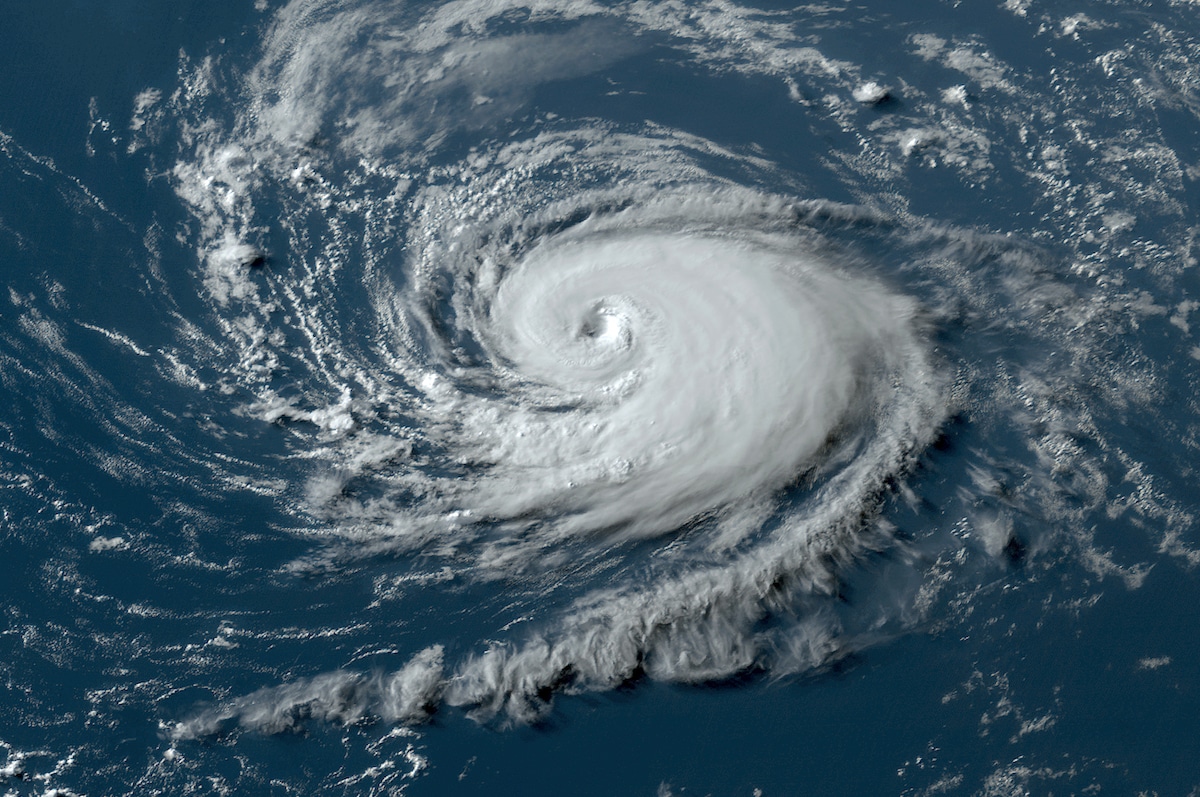NOAA: ‘Above Normal’ Hurricane Season Now Twice as Likely Due to Late El Niño, Record Ocean Temperatures

 Why you can trust us
Why you can trust us
Founded in 2005 as an Ohio-based environmental newspaper, EcoWatch is a digital platform dedicated to publishing quality, science-based content on environmental issues, causes, and solutions.
National Oceanic and Atmospheric Administration (NOAA) scientists at the Climate Prediction Center have updated their forecast for this year’s Atlantic basin hurricane season to an above-normal activity level, up from the near-normal activity level predicted earlier this year.
Forecasters are saying that the likelihood of the 2023 Atlantic hurricane season — which lasts from June 1 to November 30 —being above-normal is now 60 percent, double what they had predicted in May, a press release from NOAA said. Near-normal hurricane activity is now just 25 percent likely, down from 40 percent in May. The new outlook gives a below-normal Atlantic hurricane season a 15 percent chance.
Forecasters believe it is likely that the current atmospheric and ocean conditions, like the record sea surface temperatures in the Atlantic, will offset the usual effects of El Niño that tend to temper atmospheric conditions.
El Niño causes the central Pacific Ocean to naturally warm, which affects global weather, reported The Associated Press. Its sinking air and crosswinds normally reduce storm activity. The current El Niño event is affecting the Pacific, but so far hasn’t brought changes to the Atlantic or Gulf of Mexico.
“The impacts of El Niño have been slower to emerge over the Atlantic,” said Matthew Rosencrans, lead hurricane season outlook forecaster at NOAA’s Climate Prediction Center, as The Associated Press reported.
The 2023 NOAA forecast predicts 14 to 21 named storms — a named storm is one with winds of 39 miles per hour or higher, the press release said. Of the named storms, NOAA said six to 11 could become hurricanes. A hurricane is classed as a storm with winds that are 74 miles per hour or more. Of the possible hurricanes, two to five could turn into major hurricanes with winds of 111 miles per hour or higher. The level of confidence with which NOAA makes these predictions is 70 percent. The updates include storms that have already occurred this hurricane season.
“During active years, there’s a doubling in the chance of a hurricane hitting the East Coast of the U.S. compared to an average or below-average season,” said Rosencrans, as reported by NPR.
This year’s Atlantic basin hurricane season has already chalked up five tropical storms and one hurricane, the press release said. On average, a hurricane season has 14 named storms, with seven of those reaching hurricane strength, including three major hurricanes.
“The main climate factors expected to influence the 2023 Atlantic hurricane activity are the ongoing El Niño and the warm phase of the Atlantic Multi-Decadal Oscillation, including record-warm Atlantic sea surface temperatures,” Rosencrans said in the press release. “Considering those factors, the updated outlook calls for more activity, so we urge everyone to prepare now for the continuing season.”
The most recent Climate Prediction Center ENSO discussion said there is more than a 95 percent likelihood that El Niño will continue through winter in the Northern Hemisphere. Forecasters said that the El Niño atmospheric conditions that tend to tamp down tropical activity during the Atlantic hurricane season have not only been slow to develop, but they also may not be around for much of the rest of this year’s season.
The updated Climate Prediction Center forecast also factored in Atlantic trade winds that are a little below-normal, a wind shear forecast that is below-normal and a West African Monsoon that is near- or above-normal.
The hurricane outlook covers all storm activity during a season, not just those that make landfall. Storms that do make landfall are usually predictable within about one week of their approach to land.
“The National Weather Service is dedicated to providing timely and accurate forecasts to empower individuals, families and communities to take proactive measures this hurricane season,” said Ken Graham, director of NOAA’s National Weather Service, in the press release. “New tools such as a new hurricane model, the Hurricane Analysis and Forecast System and the expansion of the National Hurricane Center’s Tropical Weather Outlook to seven days are examples of our commitment to enhancing our forecasting capabilities and services.”
NOAA says everyone who lives in areas that are vulnerable to hurricane activity should have a hurricane plan in place and use official channels to stay informed as the 2023 hurricane season progresses.
Subscribe to get exclusive updates in our daily newsletter!
By signing up, you agree to the Terms of Use and Privacy Policy & to receive electronic communications from EcoWatch Media Group, which may include marketing promotions, advertisements and sponsored content.

 233k
233k  41k
41k  Subscribe
Subscribe 




